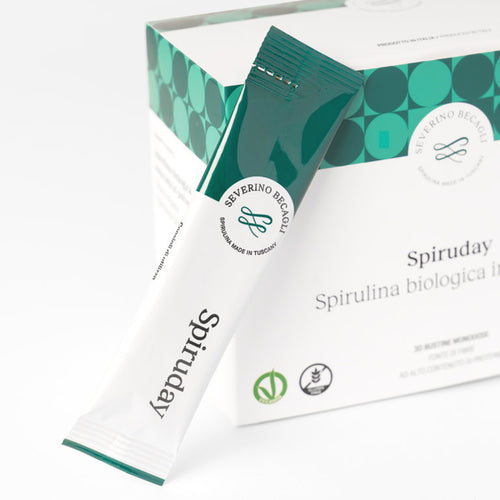In nature there are substances such as essential amino acids or foods such as spirulina which are able to offer the body the energy and muscle tone essential to better face the various daily commitments and improve one's performance in sports. Essential amino acids, like spirulina, guarantee an excellent contribution to the body to increase the ability to respond to bacteriological attacks by making the immune system more efficient and regulate the metabolism, which means being able to easily consume the calories consumed to maintain an adequate body weight.
What are essential amino acids
Amino acids are the structural unit (the building blocks) that make up proteins and are held together by a peptide bond. Once ingested by the human body, the protein bonds are broken in the stomach allowing the small intestine to absorb them easily. Instead, we talk about essential amino acids when we want to refer to the amino acids that the human body is not able to synthesize in sufficient quantities for all the organism's needs. This means that the human body cannot carry out that self-production action that occurs with some non-essential amino acids. In practice, it is necessary to overcome this imbalance by regulating the diet appropriately otherwise there could be significant health risks.
The functions of amino acids
Amino acids in general are essential to help the body have a metabolism adequate for specific daily needs. In fact, each single type of amino acid can also have multiple metabolic functions, it can be essential for the synthesis of hormones and vitamins, for the production of energy that allows you to be brilliant in various daily activities or as a support in the body's immune response to attacks viral and bacteriological. Essential amino acids predominantly have a plastic function and are therefore very important for protein synthesis. It is necessary that there is a sufficient number of essential amino acids in the body, otherwise protein synthesis may not have a positive outcome with all the consequences of the case. In fact, when an essential amino acid is missing, it will not be possible to complete protein synthesis and therefore it is called a limiting amino acid.
Which and how many are the essential amino acids
Many scientific studies carried out in recent years have been aimed at essential amino acids, allowing us to discover the variety and quantity existing in nature. It has been discovered that all living organisms need to have essential amino acids and that overall there are 20 essential amino acids for protein synthesis. Narrowing the field to the adult male organism, it has been estimated that there are 8 essential amino acids and in particular phenylalanine, lysoleucine, lysine, leucine, methionine, valine, tryptophan and threonine. Instead, in subjects who are in the growth phase, there is also an additional essential amino acid known as histidine. In nature, amino acids are present in food proteins introduced into the body during the consumption of a specific food and are then reduced, in the digestive system, to individual amino acids and then assimilated by the body in the small intestine. Since there are over 20 amino acids of various types in nature, it is clear that the possible combinations are infinite, so there are many different proteins, each important for the most disparate needs of the organism.
It must be underlined that as far as the human body is concerned, it is not necessary to consume all the proteins present in nature, but only a small part. Furthermore, proteins that refer to the missing essential amino acids must necessarily be introduced with an appropriate diet because the body is not able to synthesize them from other amino acids. This means that it will be necessary to consume certain foods daily to satisfy the deficiencies caused by this particularity. Nutrition experts are able to establish the quantity and relationship between essential amino acids in a protein with the so-called biological value, so it is necessary to choose foods rich in proteins with high biological value. Only in this way can problems affecting all body functions be avoided.
What foods are rich in essential amino acids
With a correct diet it is possible to overcome the lack of essential amino acids: there are some foods that are richer and have a sufficient quantity to satisfy the body's expectations. For example, meat, eggs, fish and some dairy products are foods that offer the right amount of essential amino acids, while there are others that are deficient from this point of view. To give an example, cereals have proteins that are deficient in some essential amino acids such as lysine and tryptophan, while legumes are deficient in the quantity of methionine. This means that you need to be adequately supported by a professional to appropriately balance your daily diet and have the right balance of foods that offer the necessary quantity of the various essential amino acids. Consuming certain foods present in nature such as spirulina also helps to have an appropriate balance that allows the body to enjoy all the main functions to the fullest. In fact, spirulina is the only food at the moment, in addition to breast milk, which we only consume in first months of life, which naturally contains all 8 essential amino acids; It is therefore essential to integrate dried spirulina powder into a balanced diet.
How to estimate your daily requirement for essential amino acids
It is not easy to correctly evaluate the daily requirement of essential amino acids because the right balance must be found. Among other things, the situation must be assessed in a personalized way because each body has specific needs depending on many characteristics. The World Health Organization has managed to develop a summary table which indicates, for each type of amino acid, the quantity needed based on body weight. This is a sort of guideline that also takes into consideration the age of the subjects. In particular, the table shows that children who are over 3 years of age must have an increased consumption of certain essential amino acids.
The benefits of essential amino acids
The deficiency of certain essential amino acids can lead to dysfunctions in the metabolism but also many other problems that must be addressed with corrections to the diet. In practice, protein synthesis is compromised and there will be widespread problems in all parts of the body.
Naturally, if you follow a balanced diet that allows you to consume optimal foods from a protein point of view, the results and benefits will be undeniable. In particular, thanks to the intake of targeted protein foods, it is possible to have thick and resistant hair, adequate muscles for the needs of life and many other structures such as ligaments, tendons and nails which will be appreciated for their beauty and resistence. Furthermore, the benefits are very important with regards to the production of energy to be made available to the body for work activities and family commitments or for sporting activities at an amateur and professional level. For this reason, spirulina, being rich in amino acids, is very suitable as a natural sports supplement.
Having a balance of essential amino acids means having a perfectly functioning immune system capable of identifying bacteria and viruses and combating them effectively, protecting the body from many possible negative consequences. They are also very important in the transmission of nervous impulses and in the synthesis of hormones and vitamins: they allow you to appropriately regulate the various functions of the organism and have a quality of life consistent with your expectations.







